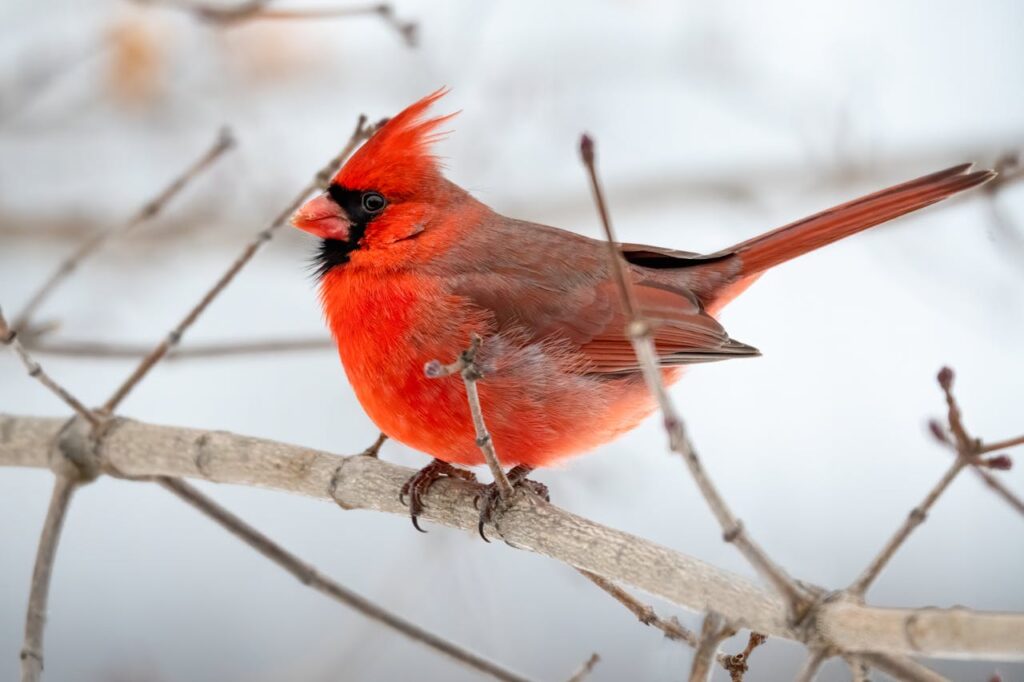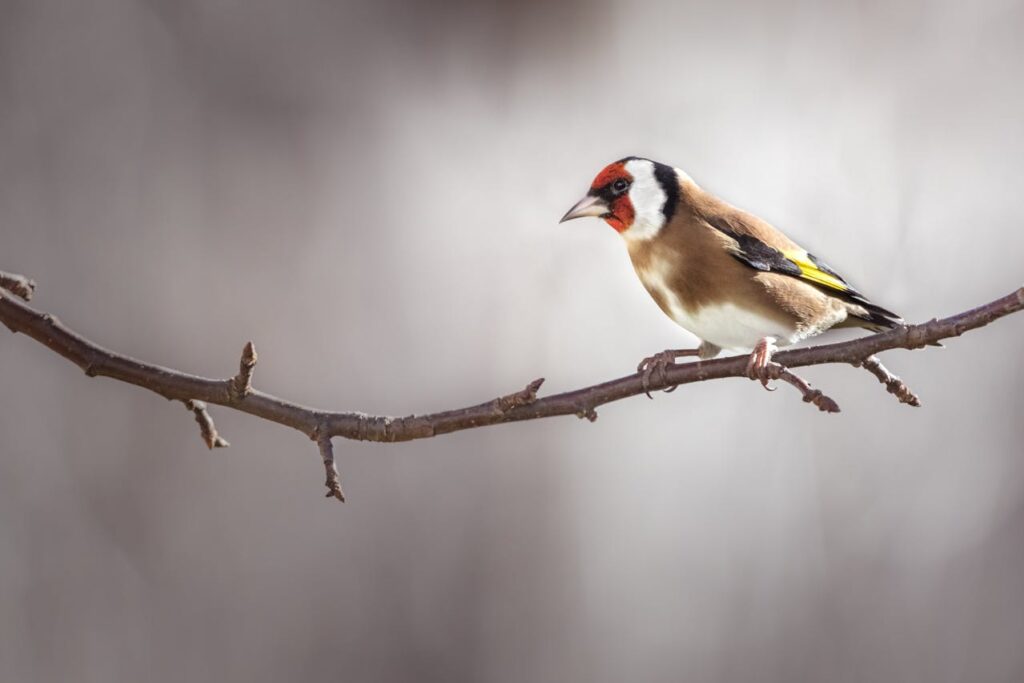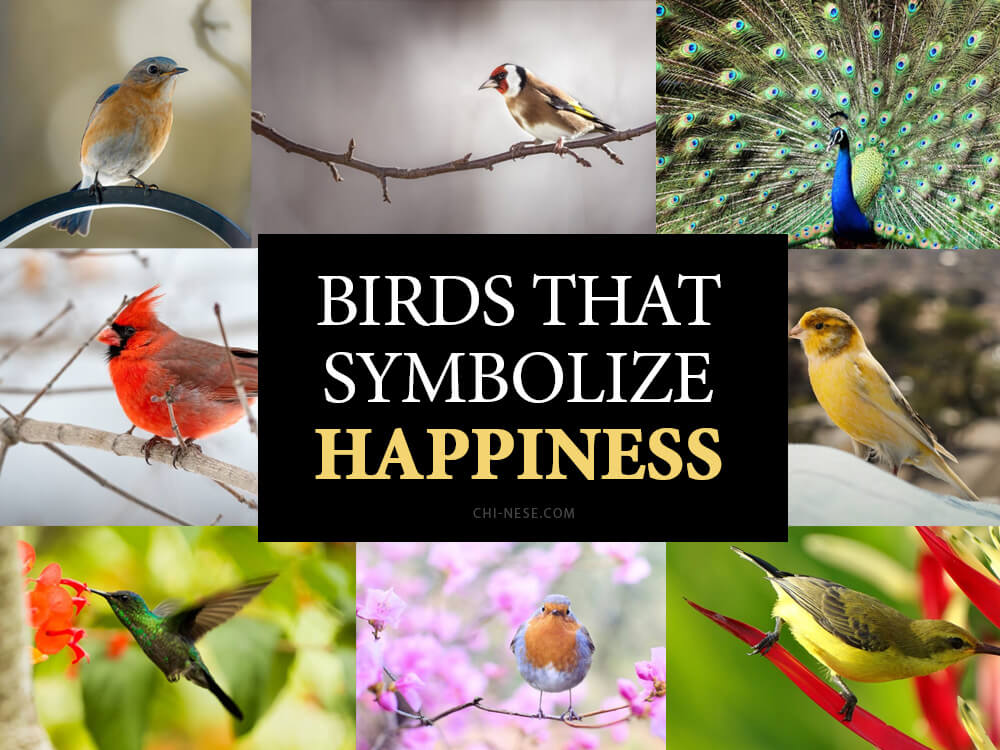You feel it in the air as spring arrives – a lightness in your step and joy in your heart. The long winter is finally over, giving way to warmer days filled with sunshine and possibilities. It’s the season of renewal and rebirth; everything feels fresh and new again. What better time to appreciate the uplifting birds that flutter around us, bringing smiles to our faces with their cheerful chirps and vibrant plumage.
Living where I do in Central Europe, I don’t, unfortunately, get to see a lot of colorful or exotic birds. But whenever I travel, I love taking the time to observe all the beautiful birds and feel super happy and joyful.
I’ve got a top ten list that includes birds such as bluebirds, canaries, swans, sunbirds, peacocks, cardinals, robins, goldfinches, hoopoes, and hummingbirds. If you look at pictures of all of them, you’ll notice most of them have some yellow in their coloring – the color of happiness and joy.
Bluebird

The sight of the bright blue feathers of the bluebird can lift your mood and fill you with joy. Bluebirds are seen as a symbol of happiness, hope and new beginnings.
Native to North America, the bluebird’s cheerful song and stunning azure plumage brings a sense of optimism. According to Native American folklore, bluebirds would carry wishes and prayers up to the heavens.
If a bluebird builds a nest near your home, it is thought to bring happiness and good fortune. Bluebirds tend to nest in tree cavities or birdhouses, so putting up a birdhouse may increase your chances of spotting these joyful birds and boosting your mood.
Hummingbird

These tiny birds are a burst of energy and a symbol of joy. As they rapidly flit from flower to flower, hummingbirds seem to radiate playfulness and bliss.
With wings that beat up to 80 times per second, hummingbirds are constantly on the move. They can fly upside down, backward, and vertically, and even hover in mid-air. This agility and vigor epitomize an energetic zest for life.
Hummingbirds also drink sweet nectar from flowers, a taste usually associated with delight and pleasure. Their preference for sugary sustenance represents an enjoyment of life’s sweeter moments.
The hummingbird’s spirited nature, radiant colors and taste for sweetness make it an ideal symbol of joy, reminding us to appreciate beauty, spread cheer and savor life’s fleeting pleasures like they do.
Swan

With their long graceful necks and pure white feathers, swans just float across the water so calmly and peacefully. No wonder so many cultures see swans as a symbol of love, purity, and cleanness.
When a swan swims or flies by, you can’t help but stop and stare at its loveliness. The way it moves so effortlessly and gracefully across the water exudes a sense of calmness and poise. No wonder swans are admired in art, poetry, music, and folklore worldwide. They represent spiritual purity, beauty, and transcendence.
The swan’s white color has long been a symbol of light, goodness, innocence and purity in Western culture. Seeing a swan in flight or with its reflection on still waters can fill you with a sense of peace and serenity. When life gets busy and chaotic, thinking of the graceful swan can help restore a sense of tranquility and well-being – well, at least for me!
Peacock

The peacock is a beautiful bird that symbolizes joy, vibrancy and self-expression. With its dazzling display of colors in its plumage and tail feathers, the peacock reminds us to embrace and express our true colors.
When a peacock fans out its tail feathers in an intricate display, it represents confidence, pride and inner beauty. The ‘eyes’ on its feathers symbolize eternal watchfulness and remind us to keep our spiritual eyes open.
The peacock’s loud call is also a reminder for us to express our truth and joy to the world loudly and proudly. When we do so, we can attain true happiness from embracing our inherent beauty and creative spirit. Oh, I love peacocks!
Cardinal

The bright red cardinal is a symbol of joy, hope, warmth, and vitality. With its vibrant plumage and cheerful song, the cardinal brightens up the winter landscape.
Cardinals are easy to spot, even from far away. The male, in particular, has brilliant red feathers that stand out dramatically against snow or bare trees. His color acts as a bold reminder that spring is coming and warmer weather is on the horizon.
The cardinal’s loud, distinctive song is another reason we associate it with cheerfulness. The male cardinal sings throughout the year to establish his territory and attract a mate. His melodious whistle is a welcome sound during the quiet of winter. Hearing the cardinal’s song lifts our spirits and gives us a boost of optimism.
Interestingly, cardinals remain in the same area year-round. They do not migrate, even in the coldest months. This is a testament to the cardinal’s resilience and ability to survive difficult times. Their presence symbolizes renewal – a promise that life continues even after a harsh winter. The cardinal’s vitality and perseverance definitely give us hope.
Sunbird

The sunbird is aptly named for its iridescent plumage that glints like sunshine. These tiny birds, measuring only 3 to 4 inches in length, are found throughout tropical Asia and Africa.
With their long, curved beaks and brush-tipped tongues, sunbirds feed primarily on nectar. They hover like hummingbirds, using their wings to stay suspended in front of flowers while they drink. Because of their diet, sunbirds are important pollinators for many plants and trees in the regions they inhabit.
The males are more colorful than the females, with metallic blues, greens, and reds on their heads, backs, and tails. The females are duller in color, with grayish-brown upperparts and paler under parts. Sunbirds are very territorial, and the males can often be seen displaying to defend their feeding areas or attract a mate, spreading and vibrating their tail feathers.
With their dazzling colors, hovering flight, and cheery chirping calls, sunbirds seem to embody the joy and brightness of the sun. Seeing these vivacious little birds fluttering in your garden on a sunny day is sure to brighten your mood and lift your spirits. Their radiant energy and zest for life give sunbirds a well-deserved symbolic association with happiness, optimism, and good cheer.
Robin

The robin is a cheerful little bird that symbolizes renewal, happiness, and new opportunities. With its bright red breast and melodic song, the robin’s appearance in spring is a welcome sight after winter. For many, seeing the first robin of the season is a sign that brighter days are coming and new life is awakening.
In Celtic mythology, the robin represented growth, renewal, and new beginnings. Spotting a robin was thought to signify that a transition or life change was on the horizon. The robin’s red breast was associated with passion, love, and vitality. Hearing a robin sing its flute-like song in the early morning light brings a sense of joy and contentment, knowing that spring has finally sprung.
The robin is a friendly, sociable bird that often forages for worms and grubs close to human activity. Having a robin frequent your yard is a sign of good luck and fortune. If you spot one, happier days are coming!
Canary

The bright yellow canary is a symbol of joy and cheer. With its vibrant color and melodic chirping, the canary came to represent happiness and sunshine.
In the early 20th century, British coal miners would bring caged canaries into coal mines as an early warning system. The birds were more sensitive to carbon dioxide and other toxic gasses, so if the canary stopped singing or died, the miners knew to evacuate immediately.
Today, the canary remains a cherished pet and continues to lift spirits with its golden plumage and sweet song. Seeing or hearing a canary, whether caged or free, is sure to brighten your day and bring a smile to your face. For its radiant beauty and uplifting presence, the canary is a perfect avian symbol of cheer.
Goldfinch

The goldfinch is a lively little bird that inspires joy wherever it goes. With its bright yellow feathers and cheerful song, the goldfinch seems to radiate happiness. Goldfinches are very social birds and travel in flocks, chattering and singing to each other as they flutter about.
Just seeing a goldfinch can brighten your day. Their vibrant yellow plumage reminds you of the sun and evokes a sense of warmth and contentment. Goldfinches are also a symbol of new beginnings and optimism. In the spring, they molt into their breeding plumage, a metaphor for renewal and fresh starts.
The goldfinch’s joyful song is music to the ears. Their lively trilling and warbling melodies can lift your mood and make you smile. Goldfinches often sing while flying in undulating loops and spins, displaying their acrobatic skills. Watching them soar and sing so jubilantly in the sky, you can’t help but feel a spark of delight.
Spotting one of these charming little birds in your garden is sure to brighten your day and fill you with glee. The goldfinch reminds us to nurture moments of joy and spread good cheer.
Hoopoe

The hoopoe bird, with its distinctive ‘pompom’ crest and orange plumage, is a symbol of joy and cheer in many cultures. Native to Afro-Eurasia, the hoopoe was considered sacred in Ancient Egypt, where its hieroglyph meant ‘to be healthy or happy.’
In Persian mythology, the hoopoe was a messenger between Solomon and the Queen of Sheba. The Quran also mentions how Solomon sent a hoopoe bird as a scout. In Europe during the Middle Ages, the hoopoe was thought to have magical powers and its blood was used in potions.
Today, seeing a hoopoe is considered an omen of good luck and joy in many places across its range. With its lively and colorful appearance, as well as its comical walk and habit of suddenly emerging from the ground, it’s easy to see why this bird is connected to happiness and delight.
The hoopoe seems to embody the cheerfulness of springtime with its orange plumage and its distinctive ‘hoo-hoo-hoo-hoo-hoo’ call, which it makes during its energetic display flights in the breeding season.
Turn Your Eyes To The Skies
If you need a pick-me-up, take a cue from Mother Nature and turn your eyes to the skies. Even if you’re not lucky enough to live somewhere with super colorful birds like me, just taking a moment to spot something feathered flying by can really lift your spirits.








